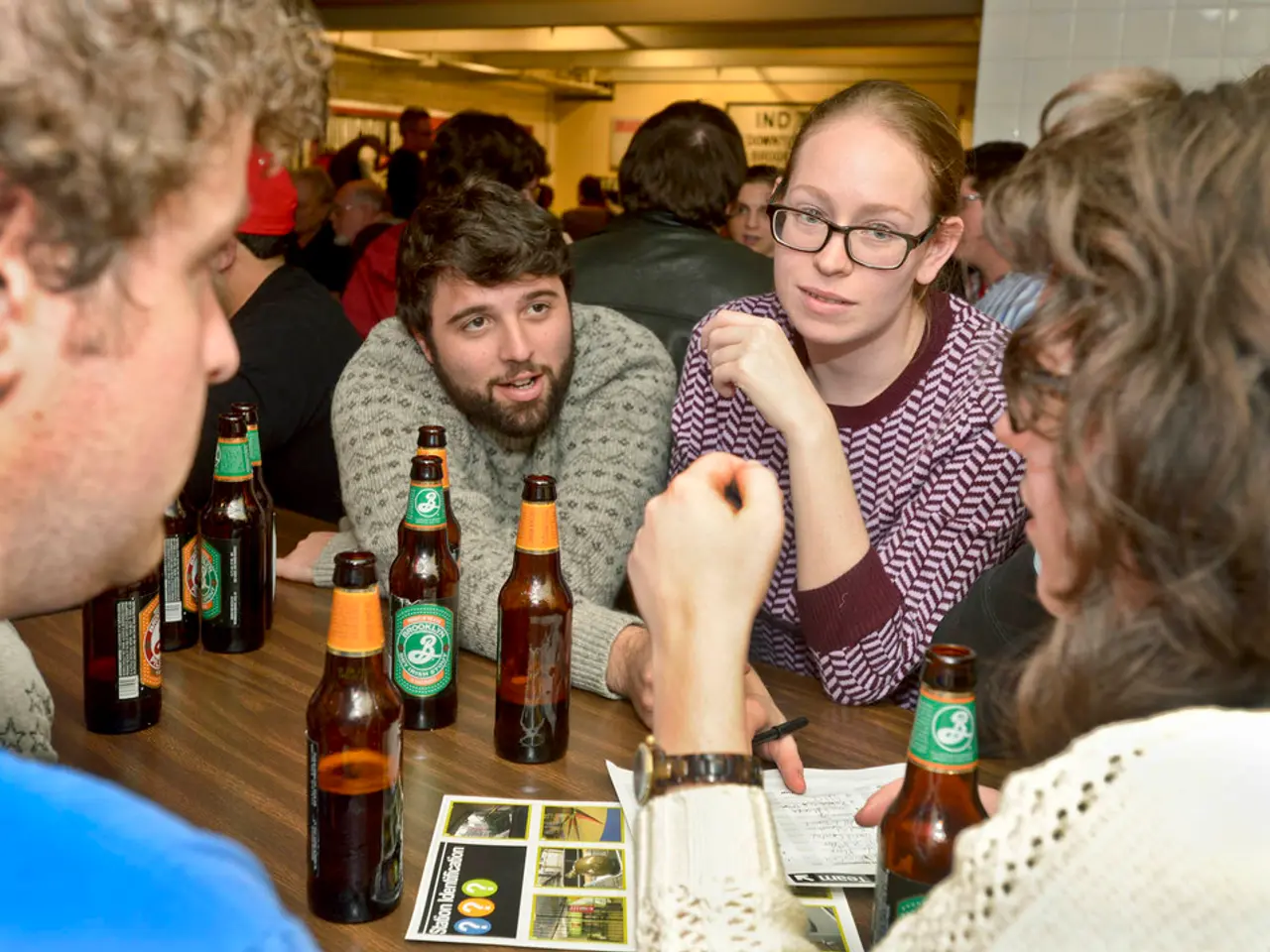Abstaining from Substances: The Increase in Individuals Voluntarily Giving Up Addictive Habits Before Reaching a Critical Point
In recent years, a new movement in sobriety has emerged, offering a fresh perspective on substance abuse recovery. This approach encourages individuals to invest in their lives rather than replace them, leading to a more balanced and resilient existence.
Social media and podcasts have played a significant role in this transformation, exposing people to stories of recovery that deviate from the traditional template. These narratives have encouraged those on the fence to seek help earlier, fostering a sense of community and shared purpose that helps combat social isolation, a risk factor for relapse.
The goal for many who choose sobriety early is not just to stay substance-free but to move on to a life where sobriety is not the defining feature. Instead, sobriety becomes an integral part of a broader sense of self, including career goals, relationships, travel plans, and creative pursuits.
This proactive approach to sobriety is being observed in treatment centers and community programs, where individuals seek help despite not identifying with the traditional addiction label. The new sobriety movement empowers individuals to rewrite their future before it's fully written.
New avenues of recovery for substance abuse increasingly incorporate holistic, innovative, and technology-assisted approaches that differ from traditional methods. For instance, programs like the Adventure Program at Evolve Indy use movement, challenge, and nature to support recovery, offering physical activity, outdoor experiences, and emotional resilience-building beyond traditional talk therapy or 12-step models.
Scientific efforts such as the NIDA Challenge also emphasize drug repurposing to treat substance use disorders (SUDs). New buprenorphine initiation strategies address barriers like withdrawal symptoms and housing instability, which traditional opioid treatments often fail to accommodate as effectively.
Contemporary strategies focus on embedding substance use prevention and treatment in primary care settings and using remote assessments, increasing early identification and ongoing support. This integration addresses barriers in healthcare access that traditional specialty clinics may not overcome.
Changing cultural attitudes embrace varied definitions of sobriety, including harm reduction and individualized goals, rather than strictly abstinence-only models. Recovery increasingly acknowledges quality of life and personal growth, reflected in more supportive, stigma-reducing resources.
Support networks, formal or informal, play a crucial role in maintaining sobriety, especially in the early stages. Connections can be formed in treatment or recovery groups, but also in everyday life through volunteering, starting a hobby, or consistent participation in activities.
The normalization of sobriety is especially true for younger generations who want to be present in their lives for parenting, creative work, travel, and other activities. Non-alcoholic drink menus in certain restaurants are being treated as full experiences, signaling a shift towards normalizing sobriety.
For some, the COVID era prompted change in substance use before things spiraled due to the increased focus on mental health. Having a sense of belonging significantly increases the chances of sustained sobriety, making it essential to foster supportive communities and resources.
In summary, new recovery avenues blend medication advancements, holistic therapies involving movement and nature, integration into primary care, and culturally responsive, personalized models. These contrast with traditional methods centered mainly on abstinence, group meetings, and less flexible medication protocols, reflecting a broader cultural embrace of varied recovery paths and comprehensive well-being.
- Recovery from substance abuse is no longer solely associated with abstinence, but also encompasses holistic approaches to mental health, health-and-wellness, education-and-self-development, and personal-growth, as seen in new treatment centers and community programs.
- As individuals strive for a more balanced and resilient existence, they are fostering connections in support networks that extend beyond traditional treatment groups, such as through volunteering, hobbies, and everyday activities, promoting overall lifestyle improvement.
- The new sobriety movement emphasizes not only the prevention and treatment of substance use disorders but also the pursuit of a fulfilling life, focusing on well-being, career goals, relationships, travel, and creative pursuits, aligning with the ideals of science, education, and personal growth.




